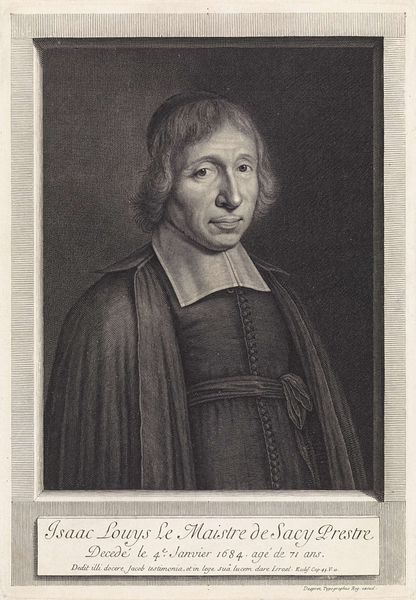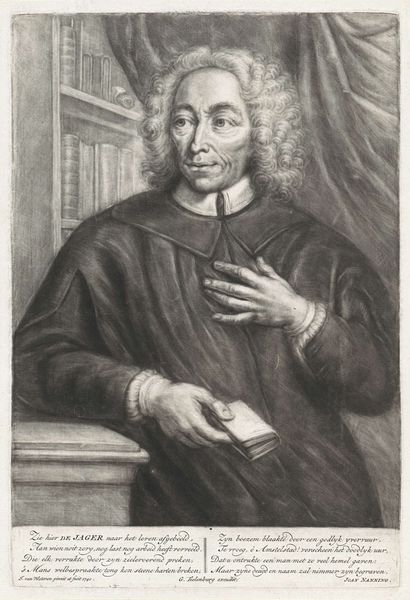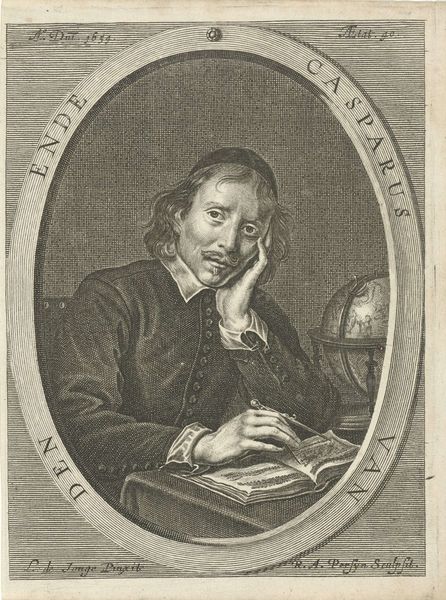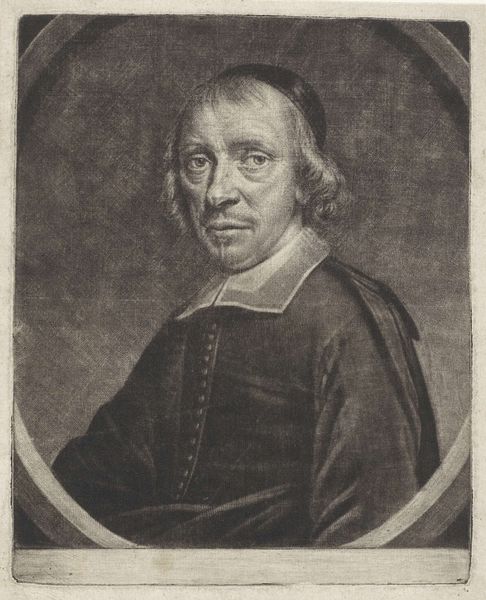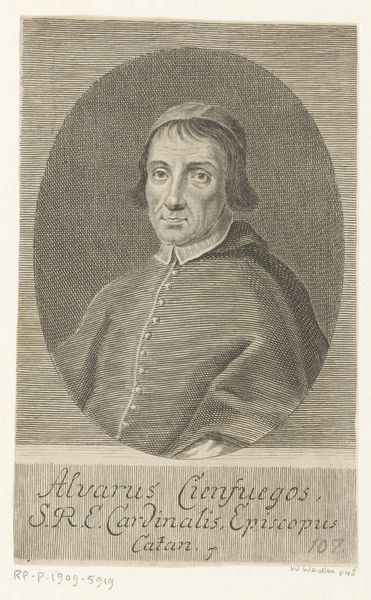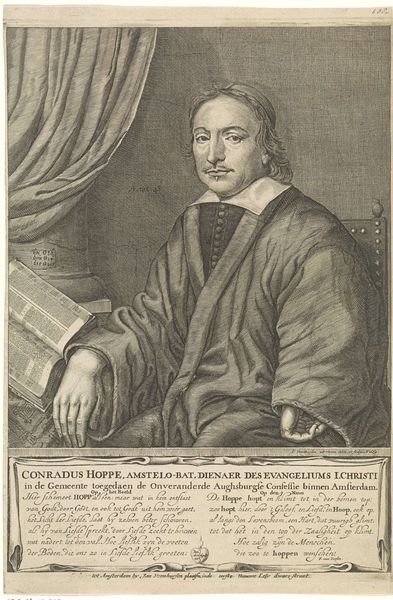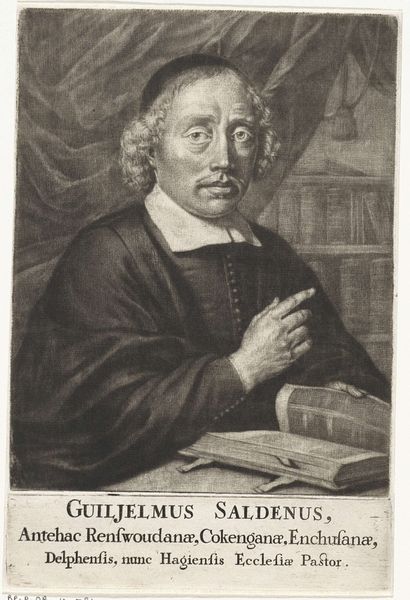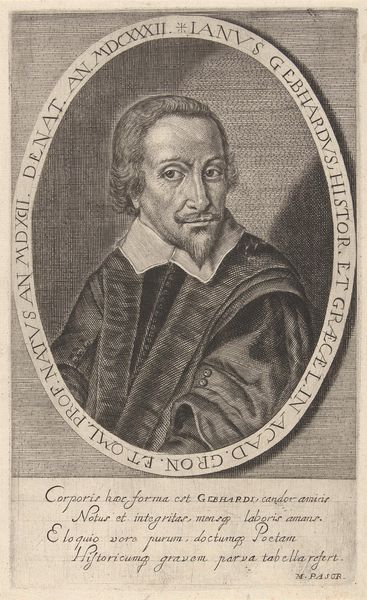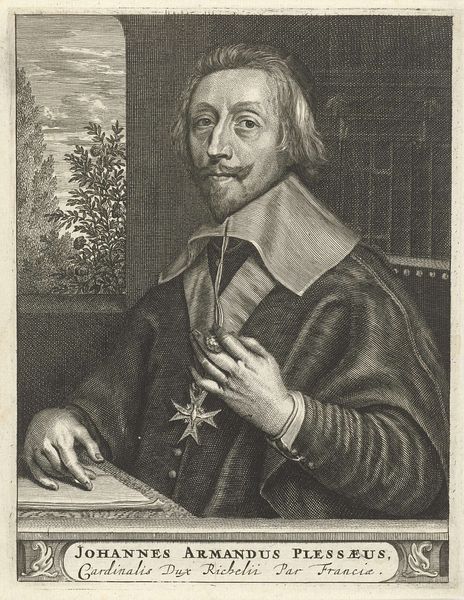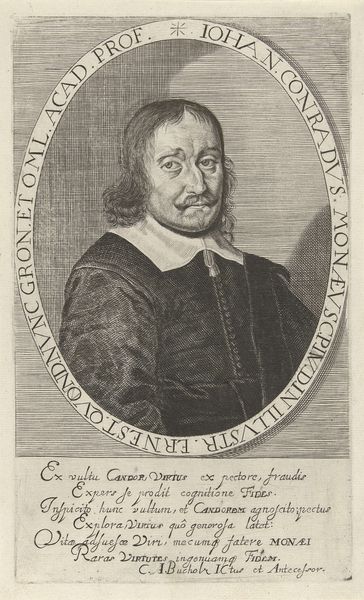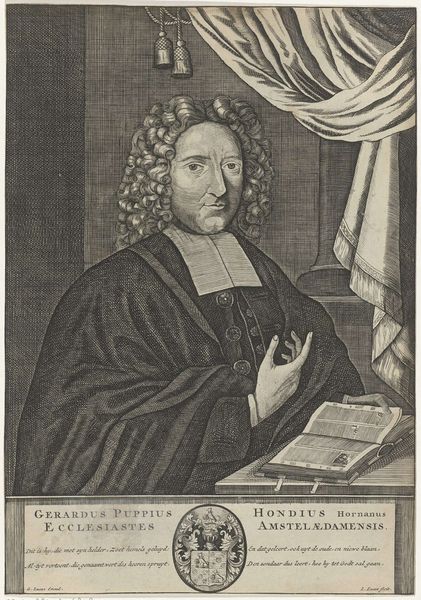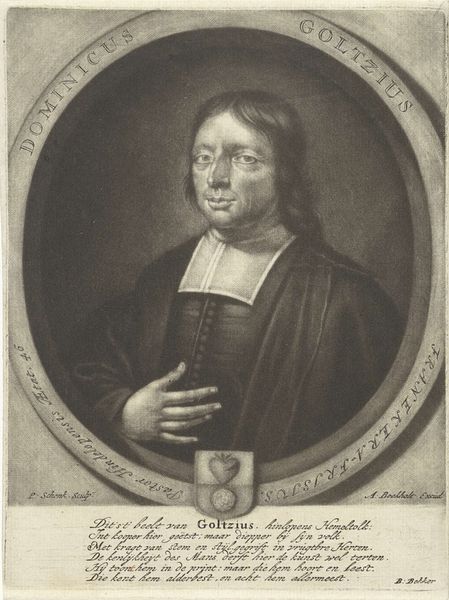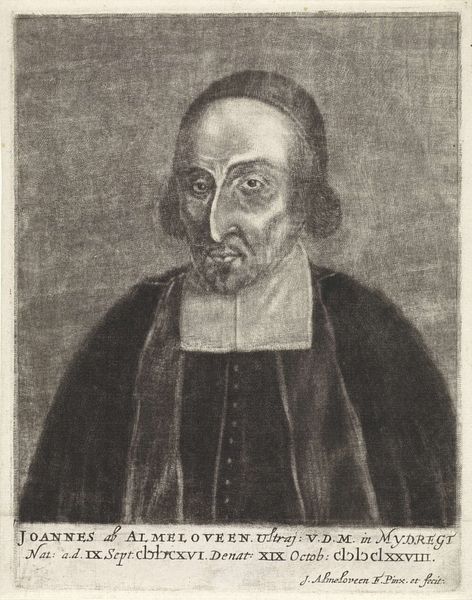
drawing, charcoal
#
portrait
#
pencil drawn
#
drawing
#
dutch-golden-age
#
pencil sketch
#
charcoal drawing
#
pencil drawing
#
portrait drawing
#
charcoal
#
realism
Dimensions: height 172 mm, width 138 mm
Copyright: Rijks Museum: Open Domain
Editor: We’re looking at a drawing called "Portret van Guiljelmus Saldenus," created between 1660 and 1693, using charcoal and pencil. The level of detail achieved with such simple media is striking. What visual elements stand out to you? Curator: The meticulous handling of light and shadow immediately commands attention. Observe the tonal gradations across Saldenus's face, achieved through careful hatching and cross-hatching. How does this contrast with the rendering of the drapery in the background? Editor: It’s less defined, more atmospheric. It almost feels secondary to the subject, as if the artist wants you to concentrate on Saldenus and not much else. Curator: Precisely. Consider, then, how the artist guides our gaze. The subject’s pointed finger acts as a vector, directing our eye. Furthermore, contemplate the geometry inherent within the composition. Do you notice the interplay of vertical and horizontal lines and how this supports the overall structure? Editor: I do. The lines create a strong sense of order. Are you saying the use of geometrical shapes adds to the formality? Curator: Indeed. But note also the subtle asymmetry. His posture and gesture create a dynamic tension that prevents the image from becoming static. How would you interpret the significance of this imbalance in the otherwise formal setting? Editor: It makes him seem more alive and real. I focused initially on the naturalism. Now, I appreciate how strategically constructed the portrait really is. Curator: Indeed. We can analyze each component and then reassemble them to find new meaning within the visual presentation. Editor: That’s great; I now realize that analyzing all elements enhances meaning, too.
Comments
No comments
Be the first to comment and join the conversation on the ultimate creative platform.
